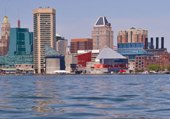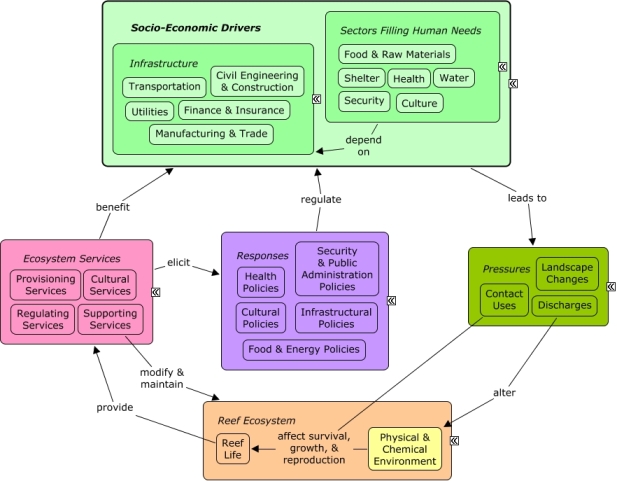ReefLink Database

Socio-Economic Drivers
Socio-Economic Drivers include the sectors that fulfill human needs for Food & Raw Materials, Water, Shelter, Health, Culture, and Security, and the Infrastructure that supports the sectors. Socio-Economic Drivers were derived from the North American Industrial Classification System (NAICS), the standard used by Federal statistical agencies in classifying business establishments for the purpose of collecting, analyzing, and publishing statistical data related to the U.S. business economy.
CMap

CMap Description
Socio-economic drivers result in human activities that may intentionally or unintentionally exert pressures on the environment, and lead to changes in the state of the reef ecosystem, including the physical and chemical environment and reef life. Changes in the quality and functioning of the reef ecosystem have an impact on the provision of ecosystem services, which directly or indirectly benefit human well-being by fulfilling many human needs. The drivers that benefit from the ecosystem services may, or may not be the same drivers that exert pressures on the reef ecosystem. Humans make decisions in response to the impacts on ecosystem services or their perceived value. Responses may seek to control socio-economic drivers through policies or economic decisions that directly influence sectors.Citations
More than 50 citations. Click here to load.
| Citation | Year | Study Location | Study Type | Database Topics |
|---|
Management Options
More than 50 management options. Click here to load.
| Management Option | Description | Sources | Database Topics |
|---|
Laws
More than 50 laws. Click here to load.
| Legal Citation | Purpose of Law | Management Organization | Database Topics |
|---|
